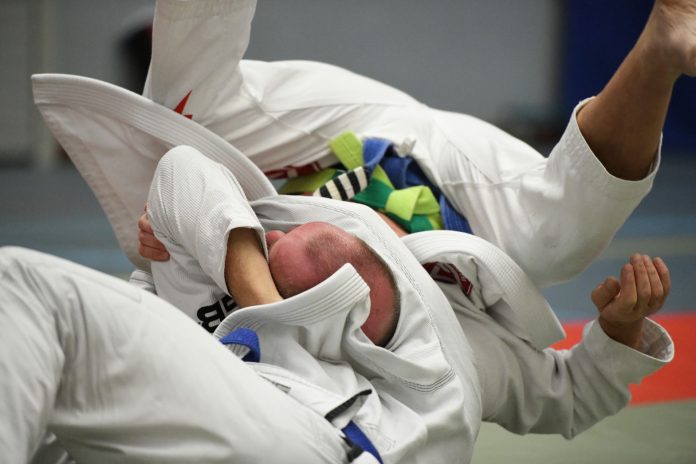
Are you feeling like people are talking a different language when you’re on the mats? That’s because they are, for the most part. In that sense, the BJJ vocabulary is a vast and unique one. SO much so, in fact, that t can freely be seen as a language of its own. When you first go into BJJ, unless you can fluently speak Portuguese you’ll have a lot to learn. Even with a background in Portuguese, there’s so much more to learn from a technical and even social aspect that it takes time to master it all. However, certain stuff is more important than others, and we have the essentials all laid out for you, so you have an idea of what’s going on around you.
Learning BJJ vocabulary is a must. It is not only going to make your training easier, but it is also crucial for tournaments as well. Not just so you can understand what your own corner is peaking, but also what directions your opponent is receiving. To make things easier for everyone, we divided the most common BJJ words and phrases into categories. That way, you can remember more stuff in a shorter period of time. I remember how confusing it can be to hear all the stuff as a beginner. I still see how completely lost new people are, even those with almost a year of training under their belt. So, let’s make things easier – check out the bare essentials of the BJ Jvocabulary that you have to master.
The Intricate BJJ Vocabulary
There’s no word that describes the BJJ vocabulary better than intricate. Perhaps complicated. IN any case, it is not easy to include Portuguese and English phrases, in addition to words of your own language that are not quite clear to you. However, once you get the hang of it, you’ll be speaking BJJ in no time.
Of course, like every other martial art or sport, you need to know the specifics of Jiu-Jitsu in a technical sense. That means the names of techniques, movements, concepts, etc. The challenging part is organizing everything in a meaningful way. JIu-JItsu is both new and still evolving. Plus it has international roots, meaning you’ll run into a bunch of phrases and words from different languages. Grapplers take them for granted, but they’ll make no sense at the beginning. For example, you might run into a Japanese and Portuguese word in the same sentence, and it’s all going to end in an English phrase that seems completely out of context. A “Kimura to an Omoplata transition in order to obtain a sweep to S-mount” is a great example of this.
There are Japanese words in there because of the Eastern roots of Jiu-Jitsu. Of course, the “Brazilan” part of BJJ is also huge, meaning you’ll run into stuff that people don’t or can’t translate. And then, there’s all the stuff in English that we take pretty much for granted around the world. And, if you’re throwing in another language to explain all of this, good luck to you! It’ll take time, but knowing the pillars of the BJJ vocabulary will certainly make things more understandable.
The Portuguese Terms
There’s simply no way to train Brazilian Jiu-Jitsu and not use Portuguese words or terms. After all, this modern version of Jiu-Jitsu we all love so much did originate in Brazil. As such, there are simply no substitutions for certain words and phrases that are deeply engrained in the essence of BJJ. To that extent, they are too many to cover here, but as far as the ten most important Portuguese terms of the BJJ vocabulary go, take a look below:
 Posture
Posture
It may be understandable to most but still. This is something a Brazilian coach will shout simply out of a habit, particularly at tournaments. It means “posture” and refers to keeping a straight spine, most often in situations when you’re in someone’s guard.
Upa
This is one you’ll most definitely hear from a Brazilian coach on a regular basis. Since most people are shy of asking at first, instead of going a few months without really understanding what Upa is, let me help you. It means “bridge”, referring to lifting your hips in the air and turning to one side in a BJJ specific motion. Most often used in escapes.
Fugir de Quadril
Complicated, right? Not so much. This translates to “hip escape’. We’ll talk more about what hip escapes are in technical terms later on. For now, it is enough to know that it is one of the staple movement patterns of Brazilian Jiu-Jitsu.
“Botinha”
In modern days this is a must in anyone’s BJJ vocabulary. “Botinha” refers to leg locks, more commonly to an ankle lock. It is easy to shout at tournaments and quite a lot of people have no idea what it means. So, if you’re on the receiving end of a leg lock and someone shouts “Botinha” make sure you defend your ankles.
Mata-Leão
Out of all the Portuguese phrases in the BJJ vocabulary, this one is the most common. There’s also a good chance you already know what it means. In any case, Mata Leão translates as “lion Kille” and refers to the rear-naked choke. Supposedly, you could kill a lion by using it, although I personally wouldn’t test that claim.
Puxe / Empurre
Two staples of BJJ, particularly with Brazilian coaches. Since BJJ is a game of Push and Pull anyway, you simply have to know the Portuguese words for it. To that extent, “Puxe” is “pull” while “Emurre” is “push”. It might take time, particularly with the first one, as it sounds like push, but you’ll eventually get there.
Vamo Bora
This is simply a way to get people going. It translates as “Let’\s Go” and is something you’ll hear often at tournaments. Also, if a coach is looking at you during rolling, you can pretty much bet that at a certain point, they’ll use this phrase.
Tatame
there is plenty of stuff in Jiu-Jitsu with the word Tatami or Tatame, from brands to actually mats. The literal translation means mats, and “Tatame” is the Portuguese term for it. It derives from the original Japanese “tatami” (most likely). As such, it’s something you’ll hear Brazilian coaches use way more than “mats”.
Porra
This is a staple of BJJ and is guaranteed to be the one word in the BJJ vocabulary you hear more than anything else. Even though it has absolutely nothing to do with actual grappling. The easy translation would be “damn”. However, it means just about anything in BJJ, from being derogative to being a word of support and approval you shout out at tournaments. Don’t take it too seriously.
Creonte
Lastly, you might run into the phrase “Creonte”. There’s no real translation for it, and the closest thing to describe it would be “traitor”. It refers to those that spend a certain amount of time training in one gym, and then go to a rival gym. Switching alliances in BJJ is still frowned upon, but this is slowly becoming a thing of the past. Still, it is a label you want to avoid, if possible.
Technical BJJ Vocabulary
In a technical sense, you’ll probably never stop learning in JIu-Jitsu. Things evolve every day and people come up with stuff that they later name. That means that there’s no real rule about naming things and you end up with more technical words than a regular language might have words. Still, some stuff is pretty universal, and there’s simply no way you can train Jiu-Jitsu without knowing what the following ten words of the BJJ vocabulary mean.
Gi / No-Gi
First things first. Gi means the uniform people wear in BJJ, which is basically a kimono. Actually, Brazilians prefer the term Kimono to Gi anyway. In any case, it is the jacket and pants you wear, oftentimes along with the belt. No-Gi, on the other hand, means training without a Gi. It usually refers to wearing rashguards and spats in modern times, but for No-Gi there’s no defined attire. You can train in whatever you want, which usually boils down to shorts and a t-shirt for most.
Guard
This is a vast term meaning positions where you fight off your back. In any guard scenario, you’re using your legs to control the opponent. If your legs are wrapped around them, it is a closed guard variation. If the legs are not bound together, you’re in an open guard. As long as your legs are between you and the opponent in any situation when you’re laying on the ground, you’re playing guard. That’s all you need for now.
Mount
This is one of the positions everyone is aiming for in JIu-Jitsu. It is also one of the most used words in BJJ vocabulary. In essence, this is when you are on top of someone while they’re lying with their back on the ground .when you’re sitting with your butt at belt or chest level, you’re mounting them. Hence the name of the position.
 Back
Back
the second position everyone wants to get to. It can be referred to as a “Back take”, “back mount” or simply “the back”. IN any case, it means you’re virtually a backpack on someone’s back. Your legs go inside their hips, while you place your arms like a seatbelt in a car diagonally around their torso. From there, you have the best spot to go for submissions while being 10)% safe from counters.
Pass
Remember that we defined the guard as any position where you use your legs in between you and your opponent while laying on the ground? Well, a pass would constitute the opponent getting past the legs of your guard. Once again, this is a phrase of the BJJ vocabulary that refers to a very wide area, given how many different guars there are.
Side Control
Once you pass the legs. One of the positions you’ll most likely find yourself in is side control. In essence, this is a pin, where an opponent is on the bottom, and you’re at a90 degree angle to them, looking to place your chest on theirs. Think about a basic wrestling pin and you’ll understand what it is right away. You’ll spend a lot of time both on the top and bottom in this position while grappling.
Submission
The ultimate way to win. A submission is anything that causes your opponent to surrender. In a tournament, this is the best way to win a match. Usually, submissions refer to moves that place pressure on the joints of the upper and/or lower limbs, or a variety of chokes and strangles we use in BJJ. Since these moves can cause a serious injury and even death, they’re done in a very controlled and careful manner.
Tap
How do you get out of these submissions then? By tapping, of course. How do you do that? When you find yourself in an uncomfortable situation, be it submission or not, all you have to do is tap with your arm or leg or verbally and you’ll be released immediately. Tapping is literally that when you usually use the palm to tap a few times to signal surrender.
Hip Escape
I told you we’d get back to this one. A hip escape often referred to as “shrimping” is a movement you’ll do every time you train BJJ. It refers to pulling your hips away from man opponent when on the ground. Here are a bunch of ways of doing this, and the movement is also done as a drill, usually as part of warmups. There’s n Jiu-JItsu or a BJJ vocabulary without this one.
Sweeps
Sweeping someone means tripping them when you’re on the bottom and ending up on top. It is far more difficult than it sounds. In order for a sweep to bring you points though, you have to do it from a position of guard, just like we discussed earlier. You can get on top from a bad position like the bottom mount or side control too, but it is not a sweep because you weren’t in a guard position.
Everyday Stuff
Finally, there’s stuff in any BJJ academy out there that makes absolutely no sense to outsiders. Yet, people that train longer are communicating in their own weird way as it seems. What’s even weirder is that they can actually communicate great with people from other gyms or even countries by using the same BJJ vocabulary. Certain terms are just unique to BJJ and they’re the same everywhere. Here are a few extremely common ones:
Cauliflower Ears
What on earth might this mean? Cauliflower ears are something that’s not specific only to BJJ, but rather all grappling martial arts. It is a common chronic condition of the ears that causes them to look like cauliflower due to repeated trauma. As the cartilage in the ears deforms, they take on a specific look. It doesn’t happen to everyone, and it doesn’t need to happen at all, really. That’s why ear guards are for.
Ringworm
You might want to consider really paying attention if you hear this word around the gym. It may just be a discussion, but if it refers to cases from the academy, it’s time to stock up on BJJ soaps. That said, ringworm is a common fungal skin infection that plagues martial arts in general. It is quite hard to get rid of, both from the gym and yourself, so keep your hygiene levels high, and avoid gyms that have had issues with it in the past.
Rolling
Another staple of the BJJ vocabulary. I’ve never heard practitioners from any other martial art uses a different word for sparring other than “sparring”. In Jiu-Jitsu, though, the coolest possible term is used for this purpose – rolling. Since sparring means pretty much rolling on the ground for an allotted period of time, it is more than appropriate. Pretty much anything out outside of drilling and working on technique is referred to as rolling, and you’ll soon get the hang of it.
Let’s Flow
Something many people ay, but not many really mean. It’s just one of those things. Flowing means rolling with next to no resistance, while constantly changing positions and setups for submissions. It is something higher-level belts can pull off, while lower belts usually end up in a full-blown sparring match even when they have the best intentions. It’s an invaluable tool for learning though, and you’ll need to master it for sure. It takes two to pull it off, though, so if you’re learning to flow, choose an experienced partner.
Oss
The one term that’s everywhere in martial arts. In the BJJ vocabulary, this is one of the terms that are left from the Japanese origins of the sport. In Japan, it means anything, from “let’s train”, to “let’s learn” etc. BJJ-wise, it is used for just about anything, not dissimilar to “porra”. Mostly, we use it as a greeting, at the start and end of class, but saying it on any occasion is not considered wrong or out of context.
Porrada
“Porrada“ is huge lately. In fact, it is “everyday porrada” if we want to include the complete term. In Brazil, this phrase is nothing specific to BJJ, and means grinding it out on a daily basis, and putting in hard work constantly. However, in the BJJ community worldwide, this is a very BJJ thing to do, say or wear on a T-shirt. It is a cool concept, I have to admit, although not really applicable to everyone.
 Stripes
Stripes
Have you noticed how BJJ people have these white lines on the black portion of their belts? Well, those lines are stripes, and they signify the level of advancement within a certain belt level. There are four stripes you can get at any belt level before a black belt. After the black belt, other rules apply but stirpes are still a big part of the belt system. So, when someone talks about getting stipes, it means being recognized as advancing towards the next level.
Drill
There’s no way past this word into the BJJ vocabulary. Drilling refers to very specific training of techniques. It is not quite rolling, but at the same time, it is not practicing like you do a new move. Drilling is a short sequence of movements or moves that you repeat for repetitions or time in order to develop muscle memory for it. Most moves are practiced this way, particularly among competitors and drill sessions are something you’ll often run into in Jiu-JItsu.
Gracies
One thing that people often fail to understand completely who the heck are the Gracies? Simply put, the Gracie family is the one responsible for the development and emergence of Brazilian Jiu-Jitsu. However, they are a huge family, and I really mean huge. There are hundreds of them around the world and they all train and teach Jiu-Jitsu. There’s no need to learn all of their names or any for that matter. It is enough to know that they’re the folks responsible for BJJ.
IBJJF / ADCC
These abbreviations are also a big part of the BJJ Vocabulary. They refer t the two premier world promotions that organize Jiu-Jitsu tournaments. The IBJJF organizes both Gi and No-Gi tournaments, although Gi ones are their forte. ADCC, on the other hand, has a different ruleset and exclusively NO-Gi events that lead up to one huge, Olympic-like event every couple of years.
In Summary
The BJJ vocabulary is actually so vast that we probably need an entire dictionary to try and fit everything in. Certainly beyond the scope of any article. However, certain stuff is more important than others, and you’ll run into them regularly. So, of course, it is better if you know what’s going on, rather than just nodding your head in a confused manner.


![Darce Choke Encyclopedia – Origins, Mechanics and Variations [2025] BJJ, choke, Brabo, BJJ Darce Choke, D'arce Choke, Darce BJJ Choke](https://bjj-world.com/wp-content/uploads/2017/11/JungPoirierLeeYahoo-218x150.jpg)







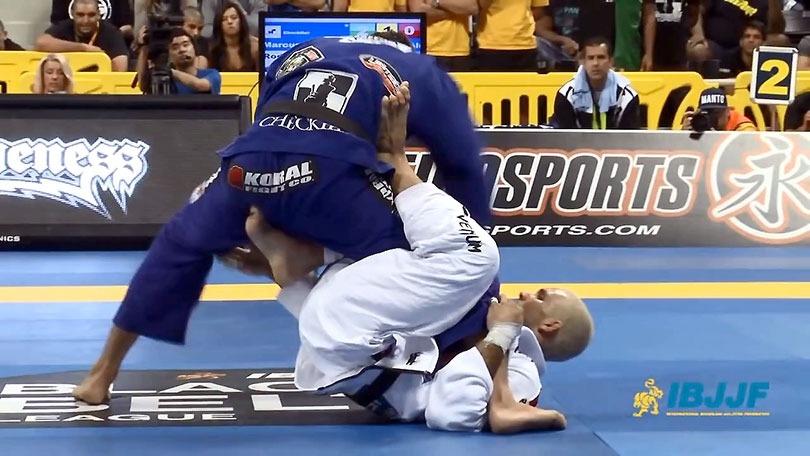 Posture
Posture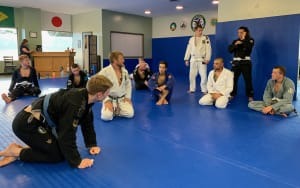 Back
Back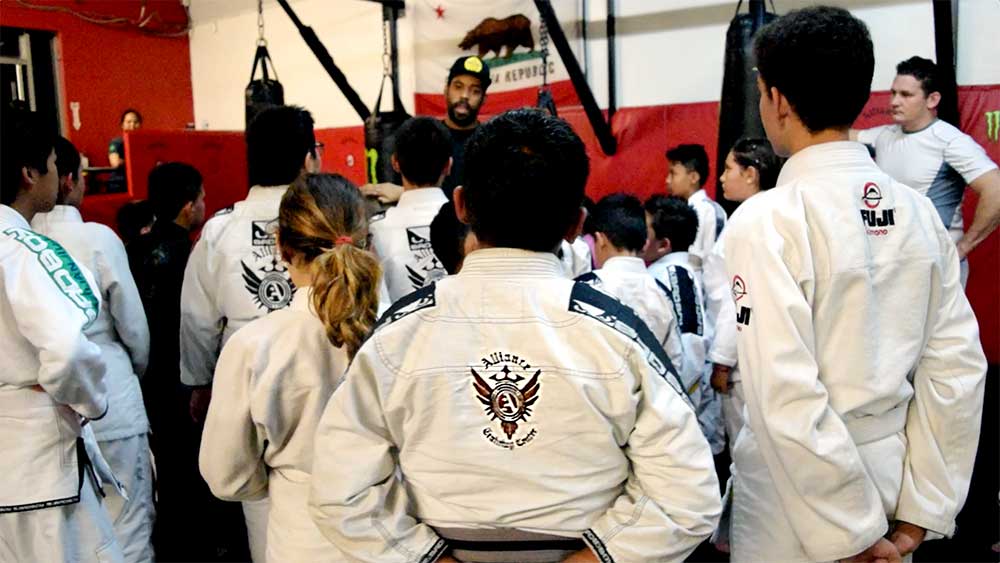 Stripes
Stripes

![X-Guard Trickery Kyle Sleeman DVD Review [2025] X-Guard Trickery Kyle Sleeman DVD Review](https://bjj-world.com/wp-content/uploads/2025/03/x-guard-trickery-kyle-sleeman-dvd-review-218x150.png)
![Countering with Crab Ride Anthony Budion DVD Review [2025] Countering with Crab Ride Anthony Budion DVD Review](https://bjj-world.com/wp-content/uploads/2025/03/countering-with-crab-ride-anthony-budion-dvd-review-218x150.png)
![Closet Closed Guard Craig Jones DVD Review [2025] Closet Closed Guard Craig Jones DVD Review](https://bjj-world.com/wp-content/uploads/2025/03/closet-closed-guard-craig-jones-dvd-review-218x150.png)
![Xanadu Back Takes Levi Jones-Leary DVD Review [2025] Xanadu Back Takes Levi Jones-Leary DVD Review](https://bjj-world.com/wp-content/uploads/2025/03/xanadu-back-takes-levi-jones-leary-dvd-review-218x150.png)

![No-Gi Grapplers Guide To Front Headlock Joel Bane DVD Review [2025] No-Gi Grapplers Guide To Front Headlock Joel Bane DVD Review](https://bjj-world.com/wp-content/uploads/2025/03/no-gi-front-headlock-joel-bane-dvd-review-218x150.png)
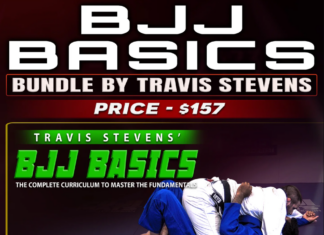

![Xanadu Back Takes Levi Jones-Leary DVD Review [2025] Xanadu Back Takes Levi Jones-Leary DVD Review](https://bjj-world.com/wp-content/uploads/2025/03/xanadu-back-takes-levi-jones-leary-dvd-review-100x70.png)
![No-Gi Defense Xande Ribeiro DVD Review [2024] No-Gi Defense Xande Ribeiro DVD Review](https://bjj-world.com/wp-content/uploads/2024/11/no-gi-defense-xande-ribeiro-dvd-review-100x70.png)
![The Rack Kyle Watson BJJ DVD Review [2025] The Rack Kyle Watson BJJ DVD Review](https://bjj-world.com/wp-content/uploads/2024/12/the-rack-kyle-watson-bjj-dvd-review-100x70.png)
![Closet Closed Guard Craig Jones DVD Review [2025] Closet Closed Guard Craig Jones DVD Review](https://bjj-world.com/wp-content/uploads/2025/03/closet-closed-guard-craig-jones-dvd-review-100x70.png)


![Finish on the Back Ethan Crelinsten DVD Review [2024] Finish on the Back Ethan Crelinsten DVD Review](https://bjj-world.com/wp-content/uploads/2024/10/finish-on-the-back-ethan-crelinsten-dvd-review-100x70.png)
![Henry Akins Black Hole No-Gi Closed Guard DVD Review [2024] Henry Akins Black Hole No-Gi Closed Guard DVD Review](https://bjj-world.com/wp-content/uploads/2024/09/henry-akins-black-hole-no-gi-closed-guard-dvd-review-100x70.png)
![Roger Gracie Guard Passing System DVD Review [2025] Roger Gracie Guard Passing System DVD Review](https://bjj-world.com/wp-content/uploads/2025/02/roger-gracie-guard-passing-system-dvd-review-100x70.png)

![Countering with Crab Ride Anthony Budion DVD Review [2025] Countering with Crab Ride Anthony Budion DVD Review](https://bjj-world.com/wp-content/uploads/2025/03/countering-with-crab-ride-anthony-budion-dvd-review-100x70.png)


![Special K Guard Neil Melanson DVD Review [2025] Special K Guard Neil Melanson DVD Review](https://bjj-world.com/wp-content/uploads/2025/03/special-k-guard-neil-melanson-dvd-review-100x70.png)



![Systematically Attacking The Crucifix Gordon Ryan DVD Review [2024] Systematically Attacking The Crucifix Gordon Ryan DVD Review](https://bjj-world.com/wp-content/uploads/2024/10/systematically-attacking-the-crucifix-gordon-ryan-dvd-review-100x70.png)
![Simplify the System Side Scissor Brian Glick DVD Review [2024] Simplify the System Side Scissor Brian Glick DVD Review](https://bjj-world.com/wp-content/uploads/2024/09/side-scissor-brian-glick-dvd-review-2024-100x70.png)


![Leg Locks From Beginner To Advanced Dan Manasoiu DVD Review [2024] Leg Locks From Beginner To Advanced Dan Manasoiu DVD Review](https://bjj-world.com/wp-content/uploads/2024/12/leg-locks-from-beginner-to-advanced-dan-manasoiu-dvd-review-100x70.png)


![Collar Sleeve Guard Mikey Musumeci DVD Review [2024] Collar Sleeve Guard Mikey Musumeci DVD Review](https://bjj-world.com/wp-content/uploads/2024/12/collar-sleeve-guard-mikey-musumeci-dvd-review-100x70.png)


